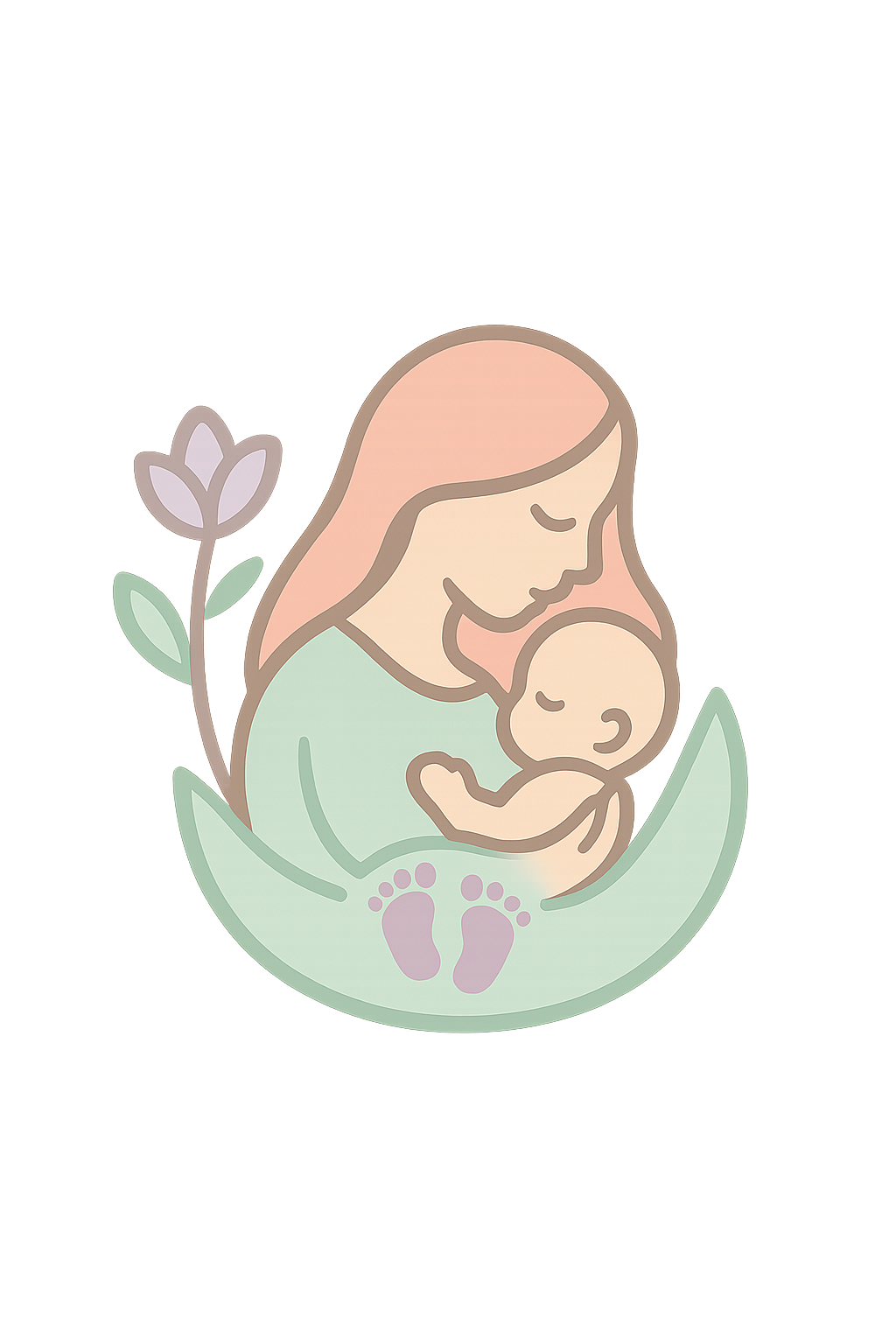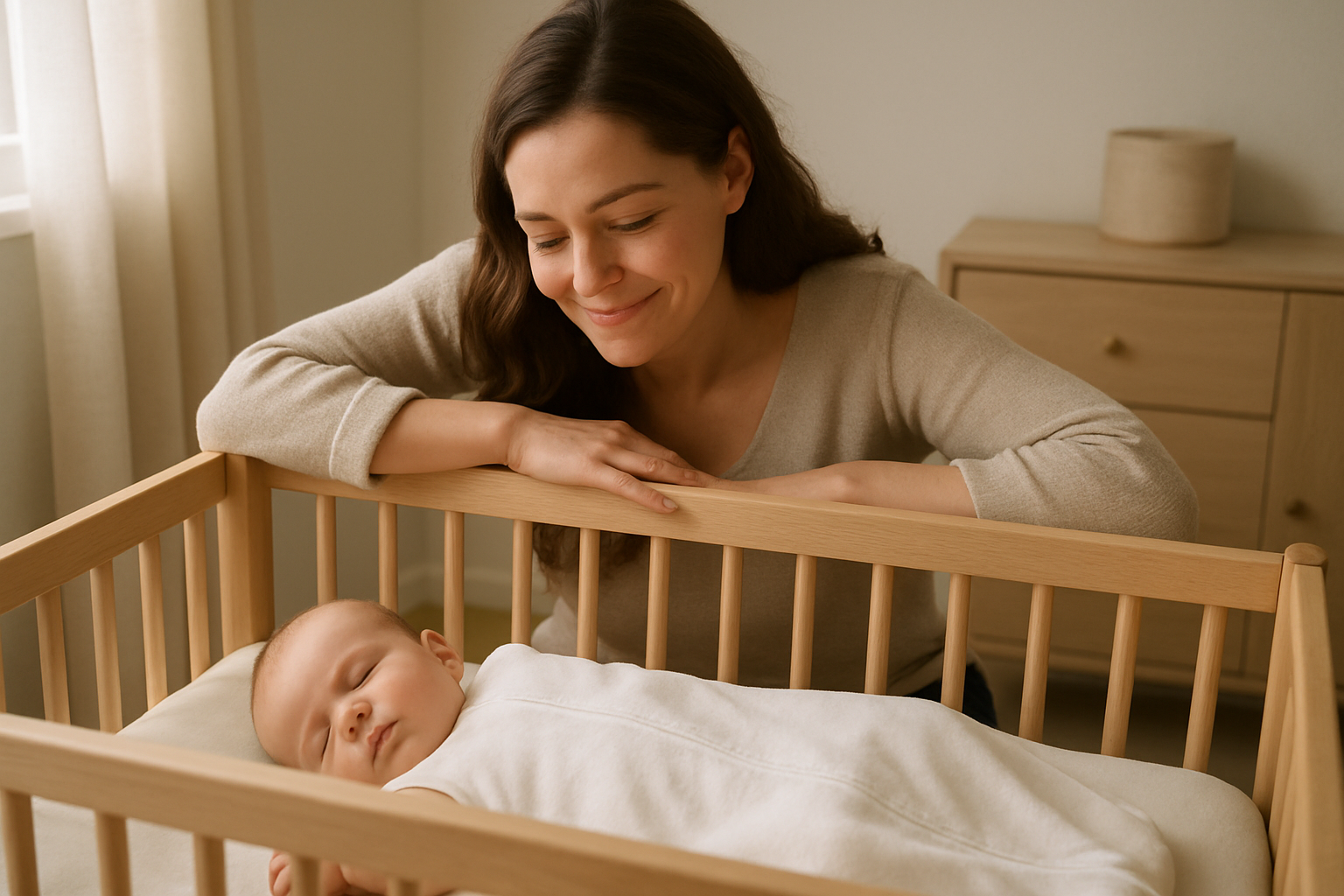Bringing your baby home is one of life’s sweetest moments — and one that comes with many new worries. Every parent wants to be sure their baby sleeps safely and comfortably. From the right mattress to room temperature, every detail matters for your little one’s well-being.
Here’s everything you need to know about safe sleep must-haves and practical tips to help your baby — and you — rest easy.
Table of Contents
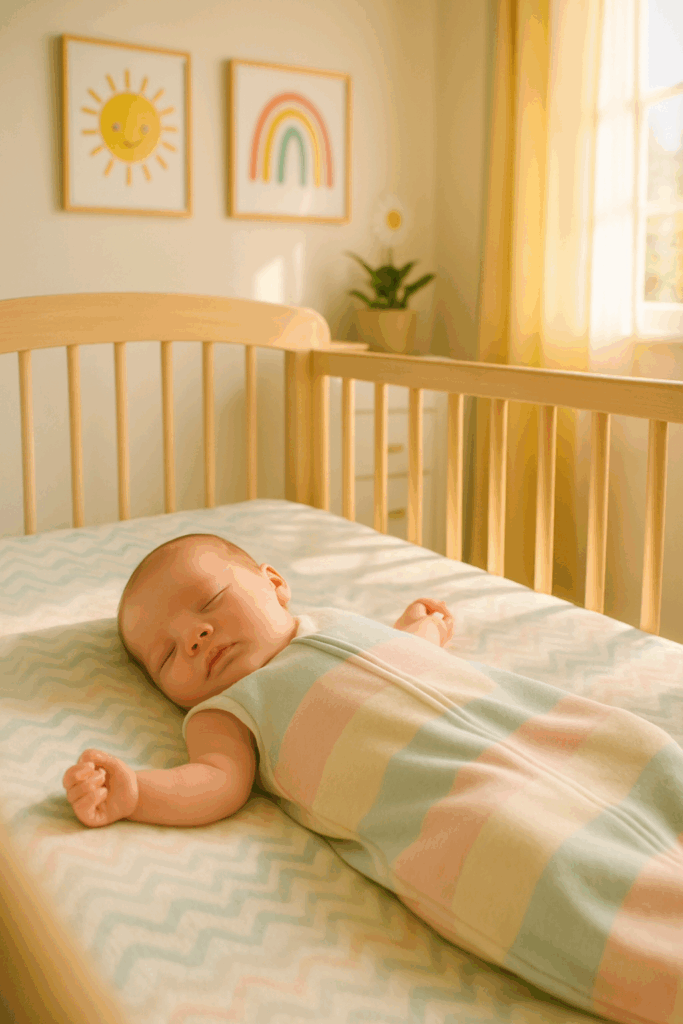
1. The Right Crib and Mattress
For safety sleep your baby’s crib should meet current safety standards (EN 716 in Europe or ASTM/JPMA in the U.S.). Check that the frame is sturdy, with slats no more than 6 cm apart.
Baby Mattress
A good night’s sleep begins with the right mattress. Here’s what to look for when choosing one for your little one:
- Firm, not soft: A firm mattress supports your baby’s body and reduces the risk of suffocation or SIDS.
- Perfect fit: Make sure the mattress fits snugly in the crib with no gaps around the edges.
- Breathable materials: Look for breathable fabrics or built-in ventilation holes to promote airflow and prevent overheating.
- Hypoallergenic cover: Choose a washable, hypoallergenic cover to keep your baby’s sleep environment fresh and clean.
- Safety certified: Always check for safety certifications that meet your country’s baby sleep standards.
Tip:
Use a mattress protector with 100% waterproof to keep the mattress clean and dry. Shop for mattress protector
2. Co-Sleeper Safety
Many parents love using a co-sleeper (a small baby bed that attaches to the parents’ bed). A co-sleeper is a cozy option that helps parents keep their baby close, especially during the first few months.
Here’s what to consider:
- Age limit: Most co-sleepers are suitable from birth until around 5–6 months, or until your baby can sit up or roll over independently. After that, transition your little one to a crib.
- Strong and stable: Choose a sturdy, well-built frame for maximum safety.
- Breathable sides: Mesh sides improve airflow and let you keep an eye on your baby while they sleep.
- Firm surface: Just like a crib mattress, the co-sleeper surface should be firm and flat.
- Adjustable height: This allows the co-sleeper to align with your bed for easy nighttime feeding and comfort.
Co-sleepers support safe sleep for room-sharing, which experts recommend for the first six months — helping parents bond with their baby while minimizing SIDS risk.
Click here to shop for a co-sleeper
3. Skip Pillows, Blankets, and Toys
Keep your baby’s sleep space bare and simple. Avoid pillows, blankets, stuffed toys, or crib bumpers — all of which pose suffocation hazards.
Instead, use a sleep sack or wearable blanket to keep your baby warm safely.
4. Keep the Room Cool and Comfortable
The ideal room temperature for babies is 20–22°C (68–72°F). Overheating increases sleep risks.
✔ Dress your baby in one more layer than you’d wear.
✔ Use light, breathable fabrics like cotton or bamboo.
✔ Keep cribs away from heaters or windows.
If your baby’s chest feels warm (not sweaty), you’re at the right temperature.

5. Always on the Back
For a safe sleep place your baby on their back for every sleep — nap or night. This position is the safest for breathing and reduces SIDS (sudden infant death syndrome) risk.
Once your baby rolls on their own, it’s fine if they change positions — just keep starting them on their back.
6. Must-Have Safe Sleep Accessories
Make your sleep setup complete with:
- Baby monitor – for peace of mind. Shop for monitor
- Fitted crib sheets – no loose corners chose 100% cotton material. shop for crib sheet
- Room thermometer – for easy temperature checks. shop for room thermometer
- Sleep sack – safe alternative to blankets, make sure you choose the right size for your baby. shop for sleep sack – for a lighter materials shop for sleep sack.
Each of these helps create a calm, controlled environment for your baby’s rest.
Tip 1:
When buying a sleep sack for your baby, choose a larger size so your little one can use it comfortably for a longer period of time.
Tip 2:
There are mainly two types of baby monitors with camera, here are the pros and cons of each type:
- The Wifi monitor Wi-Fi or Smart Baby Monitors (App-Connected Monitors). These monitors connect to your smartphone or tablet through an app
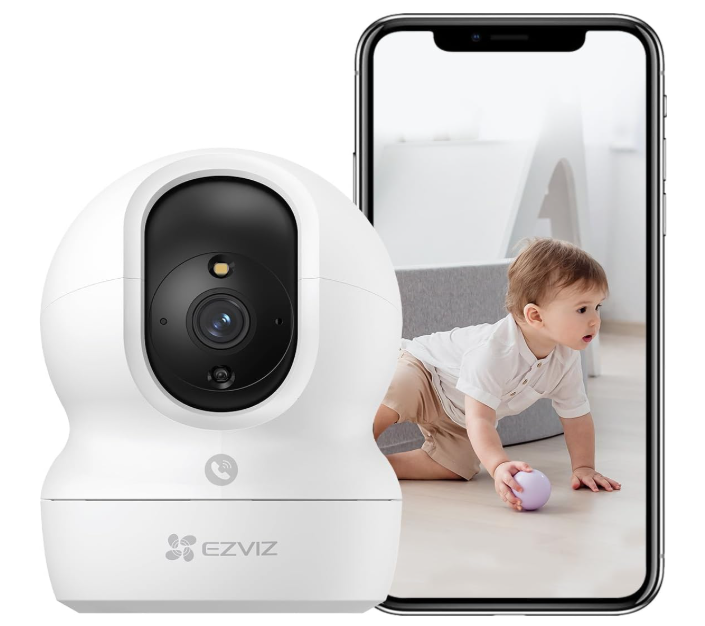
Pros:
- Remote access: You can check on your baby from anywhere, even when you’re not at home.
- Both parents (or caregivers) can access the camera from their own phones.
- High-quality video: Many offer HD video and night vision.
- Extra features: Often include motion detection, sound alerts, temperature monitoring, and recording functions.
- Convenience: No need to carry an extra device; you just use your phone.
- Cloud storage: Some apps save recordings for later viewing.
Cons:
- Internet dependency: Requires a stable Wi-Fi connection; poor connection can cause delays or disconnections.
- Security concerns: Risk of hacking if not properly secured or if passwords are weak.
- Battery drain: Using your phone as a monitor can quickly use up battery life.
- Notifications overload: You might miss alerts if your phone is on silent or in use for other things.
- Subscription costs: Some apps charge for advanced features or cloud storage.
2. Non-Wi-Fi Baby Monitors (Dedicated Parent Unit Monitors). These come with their own screen (parent unit).
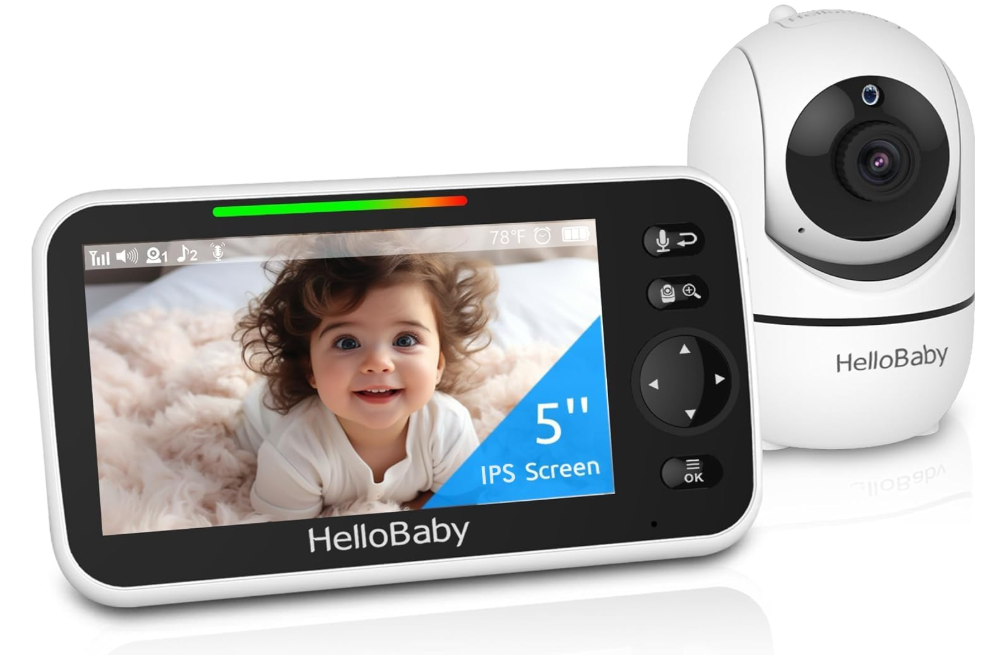
Pros:
- Reliable connection: Works without Wi-Fi, reducing lag and disconnection risks.
- Better privacy: Closed system—no internet access, so much safer from hacking.
- Always-on monitoring: The screen is designed specifically for baby monitoring, so it’s always ready to use.
- Long battery life: The parent unit usually lasts longer than a phone used as a monitor.
- Simple setup: Just plug in and go—no apps, passwords, or configuration needed.
- You can freely use your phone for other tasks while monitoring your baby.
Cons:
- Limited range: Usually works only within the house or garden; can’t monitor from far away.
- Lower video quality: The screen resolution is often lower compared to mobile-connected monitors.
- Less flexibility: You need to carry the parent unit with you.
- Fewer smart features: Typically lacks app integrations or recording options.
- Screen size: The display may be smaller than your smartphone screen.
7. Lighting and Soothing Sounds
A calm sleep environment helps your baby fall asleep faster and stay asleep longer. Keep the room softly lit at night and brighter during the day to help set your baby’s natural sleep rhythm.
Many parents find that gentle white noise or womb sounds can comfort newborns. These sounds mimic what babies hear before birth, helping them feel secure and relaxed. You can use a white noise machine or find womb sound playlists on YouTube., but keep the volume low and place the device away from the crib.
💡 Important: White noise or womb sounds should only be used for babies up to 3 months old. After that, your baby starts developing independent sleep patterns, and constant background noise may interfere with their ability to self-soothe.
8. Common Questions About Baby Sleep
Can my baby sleep in my bed?
Room-sharing (same room, separate sleep surface) is recommended — but not bed-sharing. Adult beds pose risks of suffocation and falls.
When can I use blankets or pillows?
Wait until after 12–18 months, when your baby can move freely and safely.
Do naps follow the same rules?
Yes — every sleep counts. Always use the same safe setup, even for short naps.
Final Thoughts
Safe sleep is about simplicity and consistency — a calm, uncluttered environment where your baby can breathe, move, and rest safely.
By following these tips and choosing the right essentials, you’re doing exactly what every loving parent hopes for: keeping your baby safe, cozy, and well-rested.
Creating a secure sleep environment is paramount for the well-being of your baby. Adhering to safety guidelines not only minimizes risks but also fosters a sense of tranquility for both the child and the parents. Consistently applying safe sleep practices, regardless of the duration of sleep, reinforces a routine that benefits development. Ultimately, ensuring that your baby’s sleep space is safe contributes to their overall health and your peace of mind.
